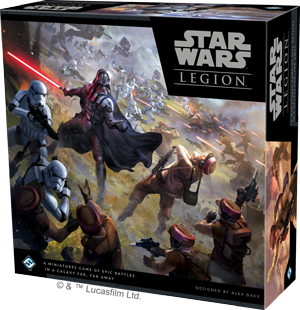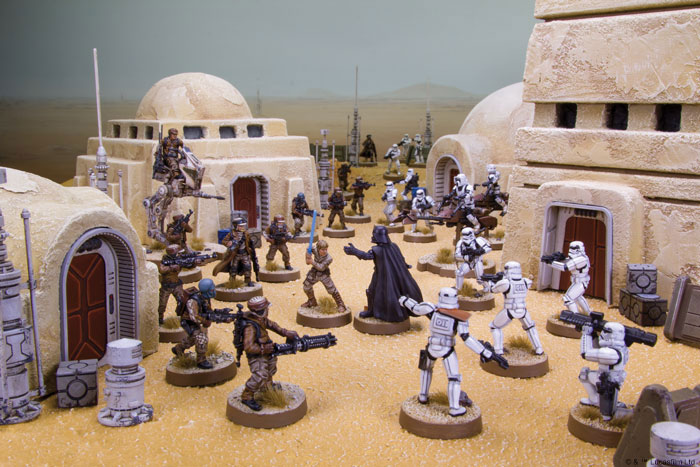 by Nils Hintze and Simon Stålenhag
by Nils Hintze and Simon StålenhagPublished by Free League
‘In 1954, the Swedish government ordered the construction of the world’s largest particle accelerator. The facility was complete in 1969, located deep below the pastoral countryside of Mälaröarna. The local population called this marvel of technology The Loop.
Acclaimed scifi artist Simon Stålenhag’s paintings of Swedish 1980s suburbia, populated by fantastic machines and strange beasts, have spread like wildfire on the Internet. Stålenhag’s portrayal of a childhood against a backdrop of old Volvo cars and coveralls, combined with strange and mystical machines, creates a unique atmosphere that is both instantly recognizable and utterly alien.
Now, for the first time, you will get the chance to step into the amazing world of the Loop.
In this game, you play teenagers in the late Eighties, solving Mysteries connected to the Loop. Choose between character Types such as the Bookworm, the Troublemaker, the Popular Kid and the Weirdo. Everyday Life is full of nagging parents, never-ending homework and classmates bullying and being bullied.
The Mysteries let the characters encounter the strange machines and weird creatures that have come to haunt the countryside after the Loop was built. The kids get to escape their everyday problems and be part of something meaningful and magical – but also dangerous.’
This game is about me.
I was born in 1971 so my formative years, the age range and era that this game represents, are perfect. My memories and experiences are the things that this game evokes, and I clearly remember the style, fashion, music and games of the 1980s with nostalgia and extreme fondness.
The 1980s were my teenage years so everything that happened in that decade made a huge impression on me, with tabletop games, the emerging computer game market and the amazing adventure movies the era had to offer. Casting a shadow over all of this was the ongoing Cold War, a conflict that I had been born into and knew little about. However, the ever-present threat of nuclear conflagaration and the ongoing troubles in neighbouring countries were always pushed to the side, out of sight and out of mind. I was a teenager, so I had other, more important things to worry about such as the next school disco, or if I could get to the games shop in the next city to get hold of the newest roleplaying book I needed.
The Loop universe is the game form of artist Simon Stålenhag’s paintings of surburban Sweden in the 1980s, fantastic images of a normal landscape inhabited by robots, strange towers and peculiar wrecks. The images themselves are an amazing thing, and they not only create the atmosphere they give the visual style that’s prevalent throught the book. The 192 page hardcover has an excellent cover and the layout throughout is crisp, easy on the eye and easy to follow. One thing Free League always does well is presentation, and this book looks great.
The game is set on Mälaröarna, west of Stockholm, and concerns the ‘The Loop’, a particle accelerator created by the government agency Riksenergi. There’s another facility in America at Boulder City in Nevada, but you can create a Loop pretty much anywhere in the world. I’ve already made notes on one in the Peak District in England, hidden under the rolling hills with the towers rising high over Mam Tor. The book gives plenty of scope for your own adventures in your own part of the world, so no matter where you’re from the townyou’ve created, or even your home town, could have a Loop underneath. With robots working in all civilian sectors, magnetrine vessels floating through the air like cargo ships and liners, and strange creatures and incidents popping into existence because of the Loop, there’s plenty going on.

Players take the roles of Kids aged between ten and fifteen. The templates on offer are Bookworm, Computer Geek, Hick, Jock, Popular Kid, Rocker, Troublemaker, and Weirdo, although these are easily adaptable to other types of Kid the player may want to portray. They have normal lives with school and family troubles – elements that the game reflects really well – but they also go on adventures and experience the stranger things the Loop produces. Think 'Stranger Things' meets 'The Goonies' meets 'Super 8' meets 'E.T.' meets 'The Explorers' meets 'Chocky’s Children' meets just about any other child-focused adventure movie or TV show you can think of… kids on hair-raising adventures that grown-ups won’t ever believe, and they can only rely on themselves and each other to get through it.
The game encourages the player to create elements of the character that create something more than just some goofy teenager out of their depth; possible home troubles, their social circle, bullying, teacher trouble, hobbies and their relationships with the other Kids all make for some excellent story elements as well as some amazing roleplaying opportunities.
Players choose a Kid aged between ten and fifteen years, the older they are the more experienced they are but the less luck they have. They divide points between Attributes – Body, Tech, Heart and Mind – and these have relevant Skills. Rolls are dice pools of D6s, adding Attributes and Skills together to create a number of dice, and any that score a six garners a single success. They’re the same mechanics found in Free League’s previous games ‘Coriolis’ and ‘Mutant: Year Zero’ and they work just as well here. Low dice pools can be extremely frustrating with continued failed rolls, but that just makes the single six that sometimes appears all the more exhilirating.
Failing a task can hurt a Kid, but the children will never die. They can be hurt which results in a Condition, which can be emotional as well as a physical injury. To negate these Conditions, a Kid can be helped out by friends but can also turn to a supportive adult – a parent or a teacher or a kind relative – for help. This reduces the Condition and gets the Kid back on track for another adventure.
The Kids themselves get involved in Mysteries that are created by the Loop, Mysteries that the Kids become embroiled in whether it’s their fault or not, adventures that will introduce something that a child would find fantastical and possibly change them forever.

All said, the book is an excellent example of a collaborative storytelling game done right. There’s plenty of scope in here for the GM to create hair-raising adventures and play a traditional RPG where the player’s interact with the story the GM has created, but the game positively pushes for a more group-focused creative approach, where the players have a hand in the setting and the dynamics of the group. The relationships between the Kids and their peers are encouraged to help drive the narative and the roleplaying opportunities, so when the Kids reach their final goal or uncover the mystery the emotional impact is so much more intense.
So, how did we get on with it?
The Loop created under the Peak District is owned by Oxford Age, a government-sponsored firm that has just been privatised. The three towers, as seen on the front cover of the book, dominate the landscape and the small village of Stuttabury (a made up place) sits in their shadow. We created Stuttabury as it was something that we all had in common; we had all spent holidays as Kids in the Peak District or places like it so we knew it well.
One evening during summer holiday, as the Kids are playing in a stream, one of them sees something crawling down the side of the tower. Human-sized but with multiple legs, the shadow creeps down and disappears into the woods. The next day, sheep are found killed but not eaten across several fields…
The mix of Kids gave the game an immediate sense of reality beyond the real-world location we were playing in. A Bookworm, a Computer Geek and a Troublemaker made up the group and to give a sense of a ‘Stranger Things’ mystery (I asked the players to watch at least one of the seasons before we played) I introduced an NPC friend, a Weirdo. Inevitably, this NPC friend who lived on one of the farms that had their sheep killed, the first Kid to see the thing crawl down the tower, goes missing and the Kids, after failing to convince the adults that they saw this thing, have to find him themselves.
Straight away we were not only involved in the game’s plot but we were emotionally connected to it, as well. We had spent an hour creating the characters and deciding their relationships with each other, and we even ran through the last day of school before the holidays, with problems from uninterested teachers, bullies and social awkwardness. It wasn’t played as some kind of ‘this is how I wish I was at school’ angle, but in a more muted, ‘this is why I hated school’ way with no glorification and no ‘defeating the bully to the cheers of classmates’ revenge fantasy. The rules called out for an emotional reflection on not only how the Kid was at school but also gave enough hints to remind you what life, and the world, was like back then. Playing the Kids as normal children just trying to get by was incredibly rewarding and the connection that they had to each other drove the narrative. The players really felt they were involved.
Being a teenager of the 1980s was a huge advantage in the game for sure; the book explains the era but actually living it made it much easier for me as GM to evoke the period. The music, movies, fashion and the gloom of a Britain under Thatcher was easy to recreate, with references to the miner’s strike in the form of radio and television broadcasts, Live Aid, and the Kids getting excited about the new James Bond film ‘A View to a Kill’, which is what they were playing when they saw the thing crawling down the tower. In fact, the missing Kid was playing James Bond, so when they finally faced off with the thing it would not let him go and kept referring to the Kid as ‘my friend Bond’. It added a whole new level of reality to the game and paid off exceptionally well.
In truth, there’s nothing stopping you from setting the game in any other era; with a little tweaking it could be set earlier, or later, in the 1990s or the 2000s. However, the game’s heart is set firmly in the 1980s and the political, cultural and social framework are well represented by the setting. In fact, with the lack of mobile telephones, computers and all the gadgets we rely on these days ot makes for a much more intense world as you can’t rely on a text message or GPS to get you out of the predicament you’re in.
There’s also a cut-off point in the game; when a Kid reaches the age of 16 they retire from the adventuring lark. However, I see no reason why a group couldn’t create older characters and just cap the character creation points at the age of 16, and even go on to create adult characters for more mature stories. After the game we discussed what the Kids would be like all grown up, especially after experiencing the thing on the tower, and what would happen if they found evidence that would prove their stories were true after being disbelieved their whole lives. That’s a great concept, and it’s a story for another time.
But that’s what Tales from the Loop does, it pulls this story out of you. It recreates an age I love and miss dearly, and it takes you back to thinking and acting as a Kid, reckless and ignorant, and it gives you a three dimensional character with heart and drive, which is something that is sometimes sadly lacking in other RPGs.
Tales from the Loop is easily one of the best roleplaying games I’ve come across in many years. It offers a wonderful setting and concept that allows you to be as creative as you please but grounds it in a reality that everyone can identify with, one way or another. The setting of the book is most emotionally resonant with myself, being a child of the 1980s, but it can work as a straight forward adventure game for anyone of any age, and can even be moved to another decade with very few tweaks. I’m already having ideas of a game set in the 1960s.
If you’re looking for a crunchy simulation you’ll not find it here; the rules system is simple and light and focuses more on the story rather than the stats. If, however, you’re looking for a game that is not only rewarding on a storytelling level but an emotional one, too, you can’t go wrong with Tales from the Loop.
Highly recommended.























